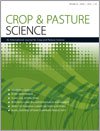Area and production of canola (Brassica napus L.) in the High Rainfall Zone (HRZ) of southern Australia has increased significantly over the past decade. Varieties available to growers have not been bred specifically for the HRZ and are generally adapted to the drier regions of the cropping belt. Field experiments were conducted at Hamilton in south-west Victoria in 2005, 2006 and 2008 to identify canola traits and management suited to the HRZ of southern Australia. Nine varieties with different reported maturities (winter and spring types) were sown at either two times of sowing and/or under different nitrogen (N) fertiliser regimes. Dates of key phenological development were recorded, dry matter was determined at bud, flowering and maturity and grain yield and yield components were determined at harvest. Plant traits and climate data were assessed in relation to grain yield. Yields of the winter types were either significantly (P < 0.05) greater or not significantly less than the spring types in all 3 years and similar to those reported under experimental conditions in Europe. This was despite the winter types flowering up to 35 days later than the spring types and spring rainfall being approximately half that of the long-term average. In general, the winter types had greater early vigour, greater dry matter production at the bud, flowering and maturity stages and were taller than the spring types. Regression analysis showed positive relationships between grain yield and pod density and plant size (dry matter and plant height). Plant size was influenced by variety, time of sowing and N fertiliser application rates. Crops in the HRZ were able to sustain more seeds per pod at larger canopy sizes and pod densities than those achieved in the northern hemisphere. Despite the number of pods per g of dry matter at flowering being nearly double that reported in the UK, there was little apparent reduction in the number of seeds per pod. It is possible that higher solar radiation and warmer minimum temperatures in the HRZ of Australia provide conditions more favourable for growth before, and during grainfill. This indicates that different dry matter production and yield component targets may be appropriate for canola in this environment especially in more typical seasons. It is likely that growers will need to sow new, later maturing varieties earlier and with higher rates of N fertiliser than is current practice in Australia. This study indicates that winter types may have the potential to provide improvements to the yield of canola in the HRZ either through the direct importation of varieties from overseas or through the identification and incorporation of desired traits into existing material. It is recommended that a wider range of germplasm be assessed over a greater geographical area to identify traits and management practices to optimise phenology and canopy structure. This information can be used to help inform breeders on crop improvement priorities as well providing tailored management practices to maximise grain yields for this environment.
How to translate text using browser tools
13 March 2012
Yield performance of late-maturing winter canola (Brassica napus L.) types in the High Rainfall Zone of southern Australia
Penny Riffkin,
Trent Potter,
Gavin Kearney
ACCESS THE FULL ARTICLE

Crop and Pasture Science
Vol. 63 • No. 1
March 2012
Vol. 63 • No. 1
March 2012
dry matter
phenology
plant height
pod density
yield components




